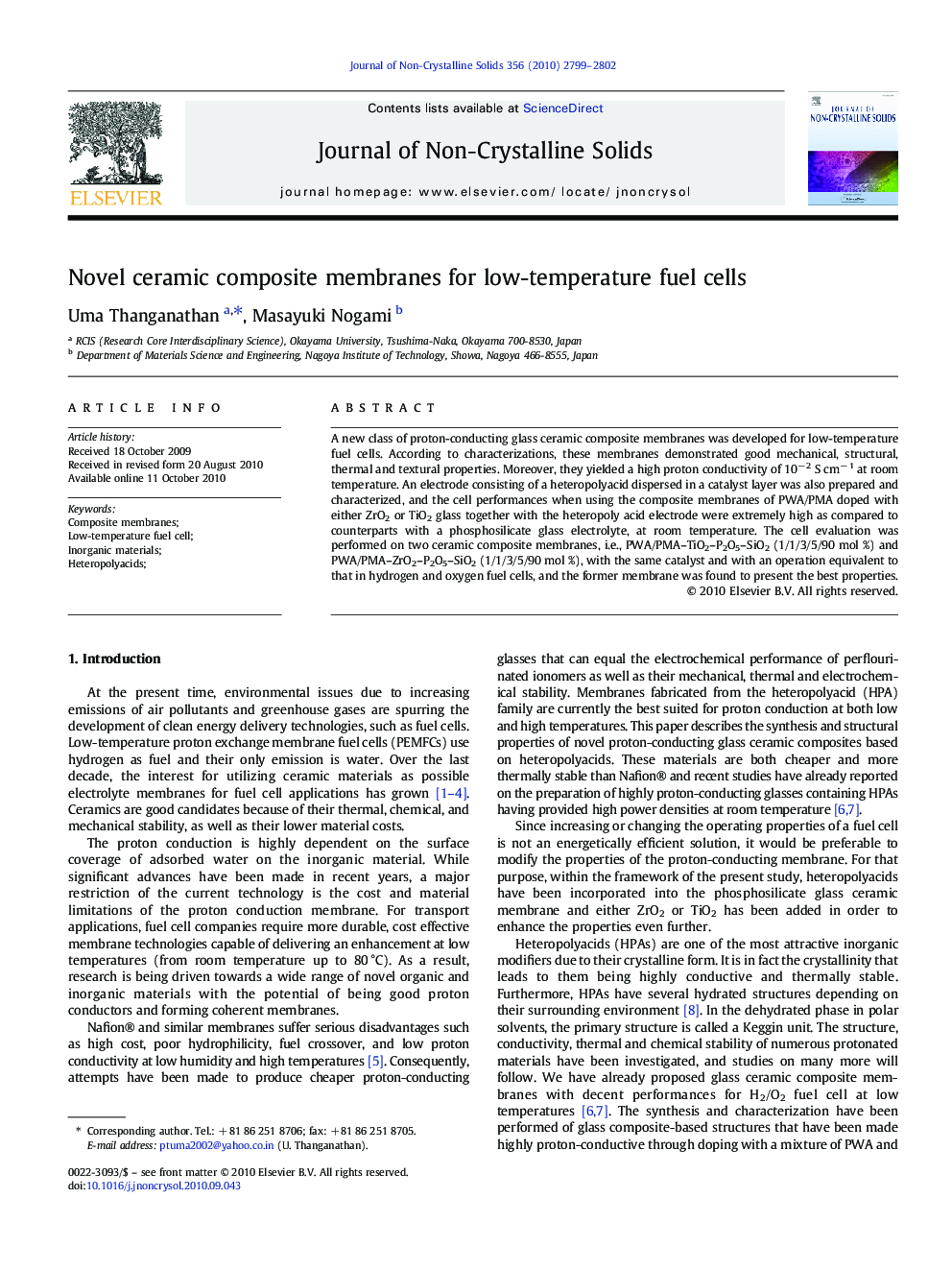| Article ID | Journal | Published Year | Pages | File Type |
|---|---|---|---|---|
| 1481769 | Journal of Non-Crystalline Solids | 2010 | 4 Pages |
Abstract
A new class of proton-conducting glass ceramic composite membranes was developed for low-temperature fuel cells. According to characterizations, these membranes demonstrated good mechanical, structural, thermal and textural properties. Moreover, they yielded a high proton conductivity of 10â 2 S cmâ 1 at room temperature. An electrode consisting of a heteropolyacid dispersed in a catalyst layer was also prepared and characterized, and the cell performances when using the composite membranes of PWA/PMA doped with either ZrO2 or TiO2 glass together with the heteropoly acid electrode were extremely high as compared to counterparts with a phosphosilicate glass electrolyte, at room temperature. The cell evaluation was performed on two ceramic composite membranes, i.e., PWA/PMA-TiO2-P2O5-SiO2 (1/1/3/5/90 mol %) and PWA/PMA-ZrO2-P2O5-SiO2 (1/1/3/5/90 mol %), with the same catalyst and with an operation equivalent to that in hydrogen and oxygen fuel cells, and the former membrane was found to present the best properties.
Related Topics
Physical Sciences and Engineering
Materials Science
Ceramics and Composites
Authors
Uma Thanganathan, Masayuki Nogami,
